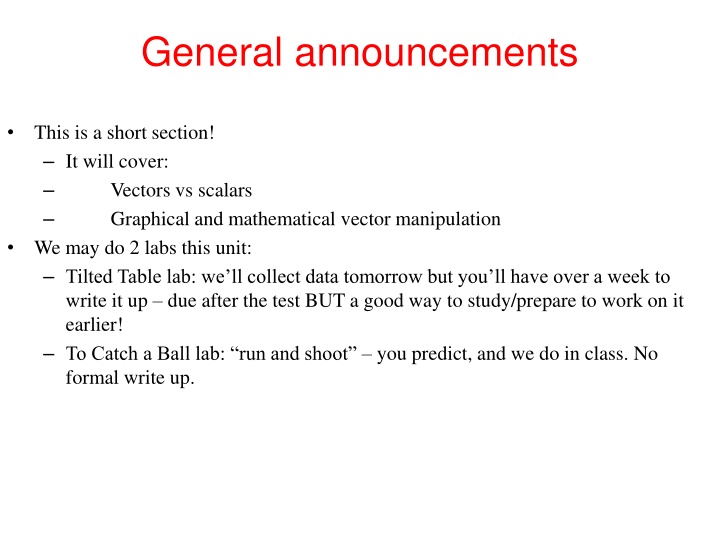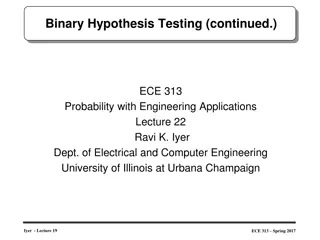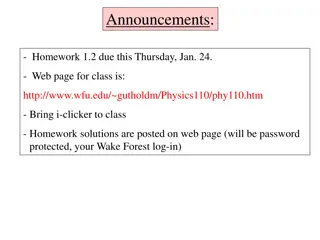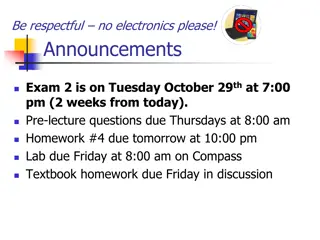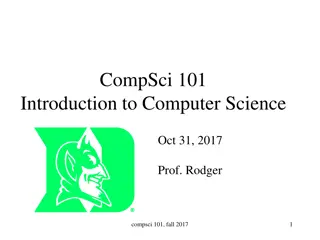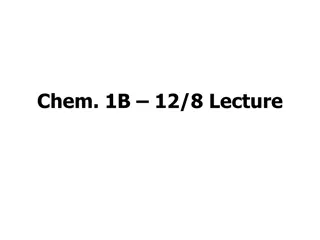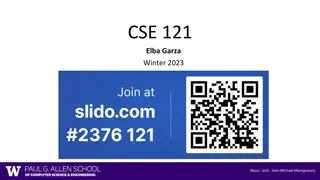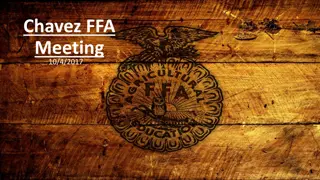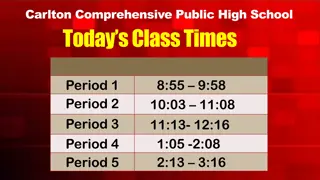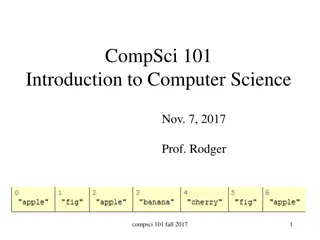General announcements
This section delves into the concepts of vectors and scalars, exploring their differences and graphical manipulation methods. It covers vector addition and subtraction, graphical representation, and polar information manipulation. Learn about unit vectors and Cartesian coordinates in unit vector notation.
Uploaded on Feb 24, 2025 | 0 Views
Download Presentation

Please find below an Image/Link to download the presentation.
The content on the website is provided AS IS for your information and personal use only. It may not be sold, licensed, or shared on other websites without obtaining consent from the author.If you encounter any issues during the download, it is possible that the publisher has removed the file from their server.
You are allowed to download the files provided on this website for personal or commercial use, subject to the condition that they are used lawfully. All files are the property of their respective owners.
The content on the website is provided AS IS for your information and personal use only. It may not be sold, licensed, or shared on other websites without obtaining consent from the author.
E N D
Presentation Transcript
General announcements This is a short section! It will cover: Vectors vs scalars Graphical and mathematical vector manipulation We may do 2 labs this unit: Tilted Table lab: we ll collect data tomorrow but you ll have over a week to write it up due after the test BUT a good way to study/prepare to work on it earlier! To Catch a Ball lab: run and shoot you predict, and we do in class. No formal write up.
Vectors and Scalars Scalars (a quantity that has a magnitude only) T= 78oF (not 78 degrees down or up, just 78 degrees just a relative measure of the average amount of kinetic- energy-per-molecule of air) Vectors (magnitude and direction . . . direction matters!) There are two ways to deal with vectors, graphically and in conjunction with a coordinate axis. We ll start with the graphical approach first. 1.)
Vector odds n ends You can add two vectors graphically by placing the tail of one vector on the head of the other (this will be animated on the next slide). You can subtract two vectors graphically by placing the tail of one vector on the head of minus the other (this will be animated on the next slide). You can take a vector and make it into minus itself by reversing its direction by without changing its magnitude. 180o You can change the magnitude of a vector (denoted by its length) by scaling it appropriately: and2C then 0.5C
Straight, Graphical Vector Addition/Subtraction Exercise A+B-C+D execute A+B+C+D execute 2.)
Graphical Manipulation From Polar Information (a look-see of actual steps to be taken) individual vectors: q= 20o q= 60o q= 260o q=130o (VECTOR ADDITION using a centimeter stick and protractor to measure both the vectors and the resultant) (Reproduce vectors to scale using cm. stick and protractor) (using cm. stick and protractor) 3.)
VECTORS Vectors (defined in polar notation) (a force whose magnitude is 8 newtons oriented at an angle of 125 degrees relative to the +x-axis . . . notice the notation--it isn t an ordered pair) Vectors (defined in unit vector notation) y A vector with magnitude ONE defined to be in the x-direction is called a UNIT VECTOR in the x- direction. It s symbol is (pronounced i-hat ). The unit vector in the y-direction is . j i x i j A vector denoted in Cartesian coordinates in unit vector notation might look like: (this is really the addition of a mini-vector of magnitude 3 m/s in the x-direction and a min- vector of magnitude 4 in the minus y-direction) 4.)
VECTORS Vectors (defined in polar notation) (a force whose magnitude is 8 newtons oriented at an angle of 125 degrees relative to the +x-axis . . . notice the notation--it isn t an ordered pair) Vectors (defined in unit vector notation) y A vector with magnitude ONE defined to be in the x-direction is called a UNIT VECTOR in the x- direction. It s symbol is (pronounced i-hat ). The unit vector in the y-direction is . j i x i j A vector denoted in Cartesian coordinates in unit vector notation might look like: (this is really the addition of a mini-vector of magnitude 3 m/s in the x-direction and a min- vector of magnitude 2 in the minus y-direction) 4.)
y How to make sense of this: Take a unit-vector in the x-direction i and multiply it by the scalar 3, you get a new vector whose magnitude is 3 and whose direction is the x- direction. Take a unit-vector in the -y-direction- j and multiply it by the scalar 2, you get a new vector whose magnitude is 2 and whose direction is the y direction. i x 3 i 3 i y j x - j -2 j 2 - j ( ) Add the two vectors graphically and you end up with a new vector with an x-component of 3 and a y- component of -2, y 3 i x and a sum of: -2 j 3 i-2 j Clever, eh?
Vector Conversions How can you go from Polar Notation to Unit Vector Notation? Say you are given the vector: You need components, which trig will give you . . . Ay=? q= 60o Ax=? 5.)
Vector Conversions A more complicated situation in going from Polar Notation to Unit Vector Notation? Given the vector: This is trickier as you are no longer dealing with a first-quadrant triangle. There are two ways to do this. The easiest is to create a triangle that IS a right triangle (see sketch), determine its sides, then add whatever signs and unit vectors are needed to characterize the vector. Cy=? q=130o f= 50o Cx=? (Remember, what you are doing with unit vector notation is creating mini-vectors, one in the x-direction, one in the y-direction, and adding them.)
Determining the magnitudes using trig yields: Putting in the signs manually, this vector looks like: q=130o f= 50o where I ve left the signs still attached to their respective unit vectors (where they technically belong). This is more conventionally written in what is called components form, where each component includes both magnitude and sign. That form looks like: It s the same vector in any case.
Vector Conversions How can you go from Unit Vector Notation to Polar Notation? Say you are given the vector: You need the magnitude and angle, which we can get with the Pythagorean relationship and a tangent function . . . By= 3.46 q=? Bx= 2 Note that is ALWAYS positive. 5.)
Vector Conversions A more complicated situation going from Unit Vector Notation to Polar Notation? Given the vector: Even though this is a third quadrant vector, the approach is the same. We need the magnitude and angle (with a twist). The math says: Dy= 3.83 q=? Dx= 3.21
Why bother with vectors? Image Source: http://www.motivateplay.com
